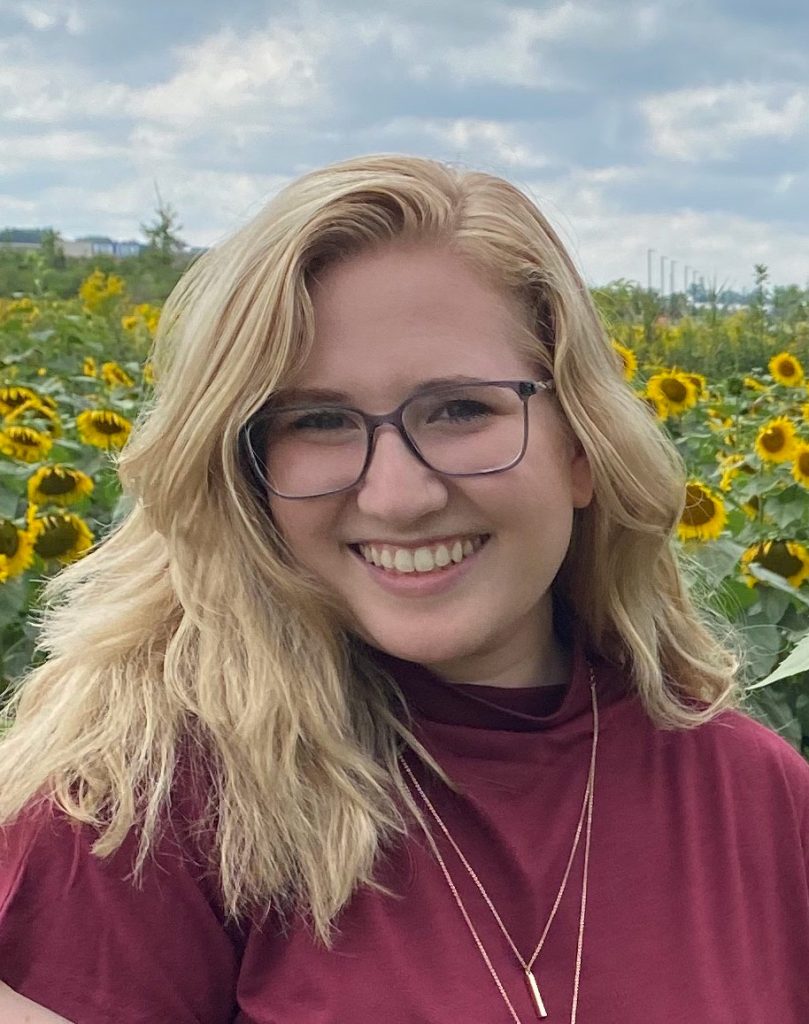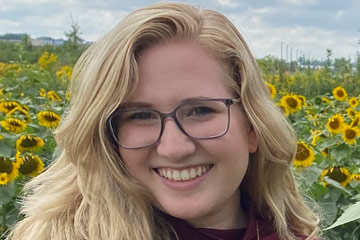
Majors: BS in chemistry, BA in art history
Minor: Studio art
Year: Fourth-year
When Sarah Lavin first arrived as an undergraduate student at Case Western Reserve University four years ago, she knew she wanted to study chemistry, but couldn’t shake her love for studio art. So she decided to combine the two. Lavin found her answer in art conservation—a field built upon science, art and art history.
Specifically, she decided to pursue a rigorous dual-degree pathway for a BS in chemistry and a BA in art history with a minor in studio art. She has focused on painting conservation, a specialty that requires a strong foundation in chemistry.
“I knew this [career path] would be a perfect blend of my passions,” she said, “and I have wanted to become a conservator ever since.”
Now a senior graduating this month, Lavin has much to be proud of. She’s pursued ground-breaking research in conservation, interned at a local art conservation center, and combined her knowledge of chemistry, data analytics and art conservation along the way.
And here at CWRU, she’s found support from her instructors who helped connect her with the local art community.
“The community here at CWRU and the [Cleveland Museum of Art] is absolutely wonderful,” said Lavin. “Almost every professor or [teaching assistant] that I have discussed conservation with has helped me network with a variety of professionals.”
It was through one of these connections that Lavin had the chance to work on a technical art history project. Lauryn Smith, a graduate student in the art history program and one of Lavin’s first-year TAs, offered her the chance to work on Smith’s project, “Seeding Technical Art History,” which was awarded a competitive Seed Sprint grant as part of the university’s “Think Big” initiative.
Through the project, Lavin worked alongside a team of scholars from the art history, physics and chemistry departments, conservators from the Cleveland Museum of Art, and artists from the Cleveland Institute of Art to develop a new optical technique to assist with art historical attribution studies and art conservation.
Afterward, Lavin had the chance to work with Ina Martin of the MORE Center at CWRU and Cleveland Museum of Art conservators to continue the study of surface chemistry in art conservation and technical analysis. In 2020, as a SOURCE Summer Research Fellow, she presented her findings on surface scanning and painting analysis research to the American Institute for Conservation annual conference alongside Sarah Barack, head of conservation and senior objects conservator at the Cooper Hewitt, Smithsonian Design Museum. That same year, Lavin also contributed a paper that was published in The Macksey Journal.
Even as she became more involved in the art community, Lavin’s involvement in the CWRU community also grew: She assumed executive positions with student organizations and co-founded her own, the Art History Club. Her on-campus involvement has included Urban Elementz, Lux, Residence Hall Association, Alpha Chi Sigma, Tri Sigma and more.
“While there have been a few all-nighters and stressful days,” Lavin said of her extensive involvement. “I knew that what I accomplished would be worth it in the end. I just did my best and here we are!”
Lavin’s most recent art conservation experience has been withIntermuseum Conservation AssociationArt Conservation in Cleveland as an intern this spring. She plans to continue working for the regional conservation lab in the summer.
“Through these experiences, I have gained a strong network, insight into the scientific research behind art conservation, and numerous skills that I will be able to use throughout my future career,” Lavin said.In the near future, Lavin plans to pursue a Master’s in Art History and Museum Studies here at CWRU before applying for a graduate degree in art conservation.


